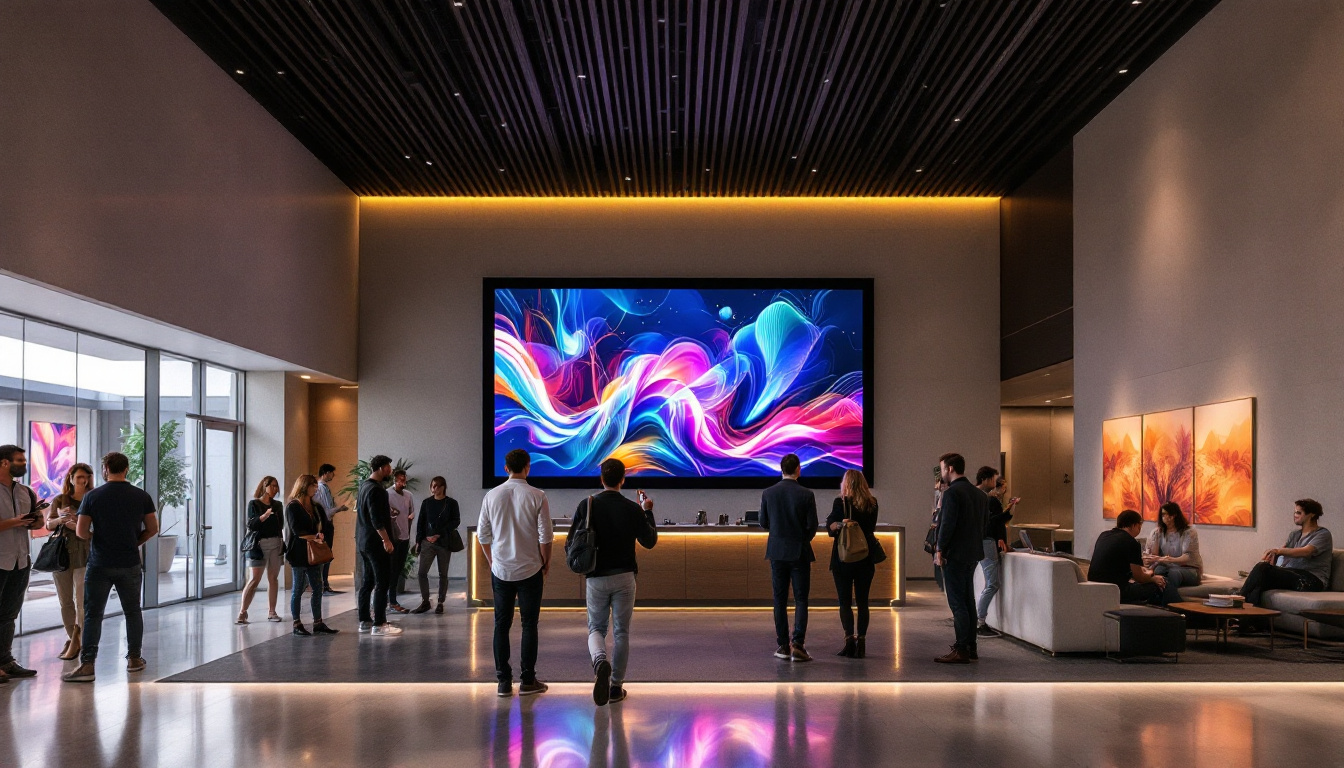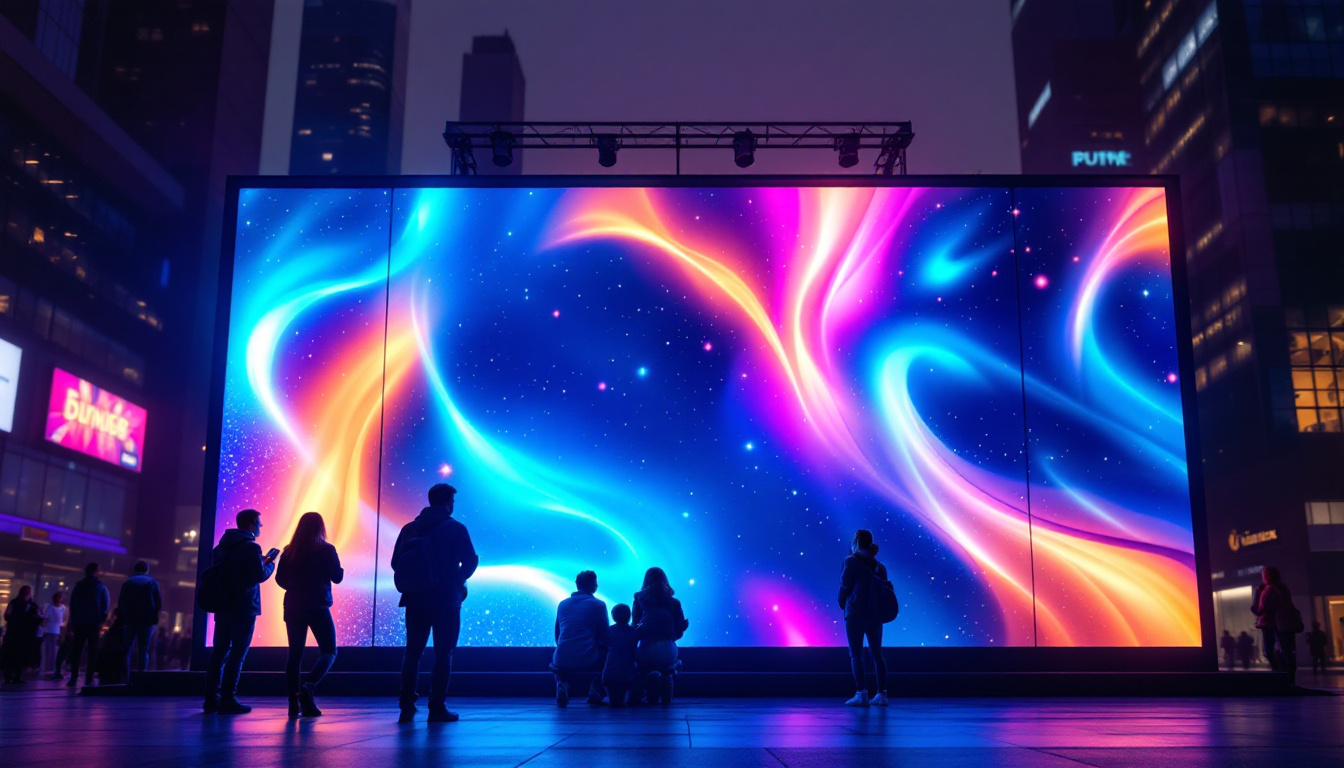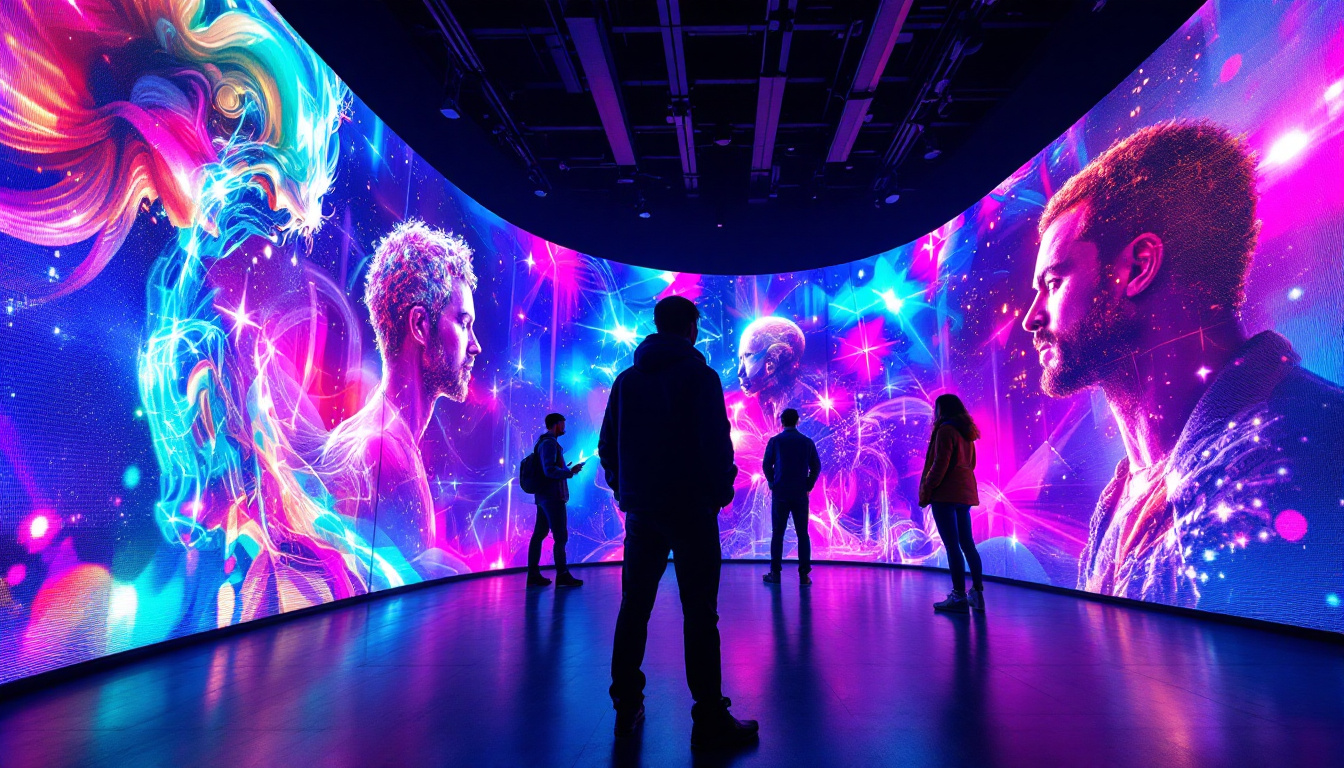Can You Use Digital Signage As A TV: LED Display Explained
In the rapidly evolving world of technology, the lines between different devices are becoming increasingly blurred. One such intersection is between digital signage and traditional television displays. As businesses look for more versatile solutions for communication and advertising, the question arises: can digital signage be used as a TV? This article delves into the capabilities of LED displays, exploring their functionality, advantages, and potential applications.
Understanding Digital Signage
Digital signage refers to the use of digital displays to convey information, advertisements, or other content. These displays can be found in various settings, including retail stores, transportation hubs, corporate environments, and public spaces. Unlike traditional static signs, digital signage can be updated in real-time, allowing for dynamic content that can engage viewers more effectively.
The Technology Behind Digital Signage
At the core of digital signage is the LED (Light Emitting Diode) technology, which has revolutionized the way information is presented. LED displays are known for their brightness, energy efficiency, and ability to produce vibrant colors. This technology allows for high-resolution images and videos, making it an attractive option for businesses looking to capture attention.
Moreover, digital signage systems typically consist of a media player, content management software, and the display itself. This combination enables users to create, schedule, and manage content remotely, providing flexibility that traditional TVs do not offer. The integration of cloud-based solutions has further enhanced this capability, allowing for seamless updates and content distribution across multiple locations, ensuring consistency in messaging and branding.
Applications of Digital Signage
Digital signage is versatile and can be used in various applications, from advertising to information dissemination. Retailers use it to showcase promotions and new products, while restaurants display menus and specials. In corporate environments, digital signage can be employed for internal communications, such as announcements and employee recognition.
Additionally, digital signage is prevalent in public spaces, such as airports and train stations, where it provides real-time updates on schedules and directions. Its ability to adapt content based on the audience or time of day makes it a powerful tool for engaging viewers. For instance, in a busy shopping mall, digital signage can display targeted advertisements based on the demographics of the shoppers passing by, maximizing the relevance of the content. Furthermore, the interactive capabilities of some digital signage systems allow users to engage directly with the content, such as touchscreen interfaces that provide additional information or allow for navigation, enhancing the overall user experience.
Comparing Digital Signage and Traditional TVs
While both digital signage and traditional TVs utilize similar display technologies, their intended purposes and functionalities differ significantly. Understanding these differences is essential for businesses considering the use of digital signage as a substitute for television displays.
Content Flexibility
One of the most significant advantages of digital signage over traditional TVs is content flexibility. Digital signage allows for the quick and easy update of content, which is particularly beneficial for businesses that need to change their messaging frequently. For instance, a retail store can update its promotions in real-time, while a TV would require manual input for each change.
This flexibility extends to the types of content that can be displayed. Digital signage can showcase videos, animations, social media feeds, and even interactive content, whereas traditional TVs are generally limited to linear programming. This capability makes digital signage a more engaging option for audiences. Moreover, digital signage can be programmed to display different content at various times of the day, allowing businesses to tailor their messaging to specific audiences or peak hours, further enhancing its effectiveness.
Interactivity and Engagement
Another area where digital signage excels is interactivity. Many digital signage systems can incorporate touchscreens or QR codes, allowing viewers to engage with the content actively. This interactivity can lead to increased customer engagement, as viewers can participate in promotions, surveys, or other interactive experiences.
On the other hand, traditional TVs are typically passive viewing experiences, where audiences consume content without any interaction. This difference can significantly impact how effectively a business can communicate with its audience. Additionally, the integration of analytics in digital signage systems allows businesses to gather valuable data on viewer interactions, enabling them to refine their strategies and enhance customer experiences. For example, a restaurant could track which menu items receive the most attention through digital displays, allowing them to adjust their offerings based on real-time feedback and preferences. This data-driven approach is something traditional TV cannot provide, making digital signage a powerful tool for modern businesses.
Can Digital Signage Replace Traditional TVs?
The question of whether digital signage can replace traditional TVs is not straightforward. While digital signage offers numerous advantages, there are specific contexts where traditional TVs may still be preferable. Understanding these contexts is crucial for making an informed decision.
Use Cases for Digital Signage
Digital signage is particularly well-suited for environments where dynamic content is essential. For example, in retail settings, businesses can showcase real-time promotions, seasonal sales, or customer testimonials. In corporate environments, digital signage can be used to communicate important announcements or display employee achievements, fostering a sense of community and engagement.
Moreover, digital signage can be integrated with various data sources, allowing businesses to display real-time information such as weather updates, news, or social media feeds. This capability enhances the relevance of the content and keeps viewers engaged.
When Traditional TVs Are More Appropriate
Despite the advantages of digital signage, there are scenarios where traditional TVs may be more suitable. For instance, in environments where content is primarily linear—such as watching news broadcasts or sporting events—traditional TVs may provide a more straightforward solution. Additionally, in settings where budget constraints are a concern, traditional TVs may be a more cost-effective option.
Furthermore, traditional TVs may be easier to set up and manage, particularly for users who are less tech-savvy. In such cases, the simplicity of a traditional TV can outweigh the benefits of a more complex digital signage system.
Benefits of Using Digital Signage as a TV
For businesses considering the switch to digital signage, there are several compelling benefits that can enhance their operations and customer engagement. These advantages make digital signage an attractive option for various applications.
Cost-Effectiveness
While the initial investment in digital signage may be higher than that of traditional TVs, the long-term cost-effectiveness can be significant. Digital signage eliminates the need for printing and replacing static materials, reducing ongoing costs. Additionally, the ability to update content remotely means that businesses can respond quickly to changing market conditions without incurring additional expenses.
Over time, these savings can offset the initial investment, making digital signage a financially sound choice for many organizations.
Enhanced Visual Appeal
Digital signage offers superior visual appeal compared to traditional TVs. With the ability to display high-resolution images and videos, digital signage can create a more immersive experience for viewers. This enhanced visual quality can help businesses stand out in competitive environments, drawing attention to their products and services.
Furthermore, the flexibility to incorporate animations, transitions, and interactive elements allows businesses to create a more engaging narrative, capturing the interest of their audience.
Choosing the Right Digital Signage Solution
For businesses looking to implement digital signage, selecting the right solution is crucial. A variety of factors should be considered to ensure that the chosen system meets the specific needs of the organization.
Display Size and Resolution
The size and resolution of the digital signage display are critical factors that can impact visibility and engagement. Larger displays with higher resolutions are generally more effective in attracting attention and conveying information clearly. Businesses should assess their specific environment and audience size to determine the optimal display specifications.
Additionally, considering the viewing distance is essential. A display that is too small for a given space may not be effective, while an excessively large display can overwhelm viewers. Striking the right balance is key.
Content Management System (CMS)
A robust content management system is vital for the successful operation of digital signage. The CMS should allow users to easily create, schedule, and manage content without requiring extensive technical knowledge. Features such as drag-and-drop functionality, templates, and analytics can enhance user experience and effectiveness.
Furthermore, the ability to integrate with other systems, such as social media or data feeds, can provide additional value, allowing businesses to create dynamic and relevant content that resonates with their audience.
Conclusion: The Future of Digital Signage as a TV
The question of whether digital signage can be used as a TV is not merely a matter of functionality; it encompasses broader considerations of engagement, interactivity, and content management. As technology continues to advance, digital signage is poised to play an increasingly vital role in how businesses communicate with their audiences.
While traditional TVs still have their place in certain contexts, the versatility and capabilities of digital signage make it an attractive option for many organizations. By leveraging the strengths of digital signage, businesses can enhance their communication strategies, engage customers more effectively, and ultimately drive better results.
In conclusion, as the lines between digital signage and traditional TVs continue to blur, businesses must carefully evaluate their needs and consider how digital signage can fit into their overall communication strategy. The future is bright for digital signage, and its potential as a powerful tool for engagement and information dissemination is just beginning to be realized.
Discover the Future of Visual Communication with LumenMatrix
Ready to elevate your brand’s presence and engage your audience like never before? Explore LumenMatrix’s innovative LED display solutions, where cutting-edge technology meets creative design. From vibrant Indoor LED Wall Displays to dynamic Outdoor LED Wall Displays, and from sleek LED Poster Displays to immersive LED Sports and Floor Displays, LumenMatrix offers a wide array of options to revolutionize your visual communication. Embrace the future with displays that captivate and communicate with unparalleled clarity. Check out LumenMatrix LED Display Solutions today and transform your space into a visual spectacle.































